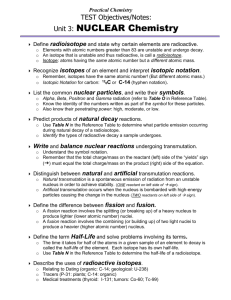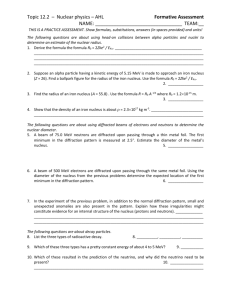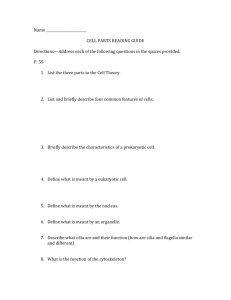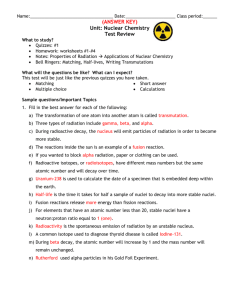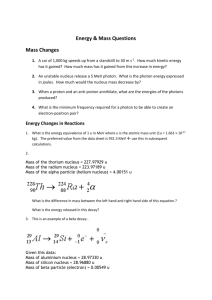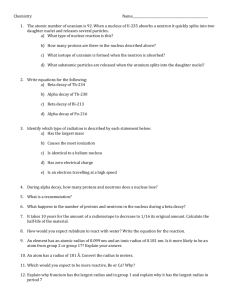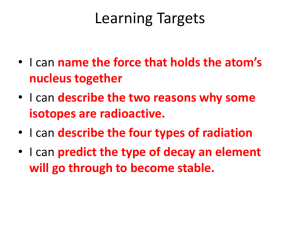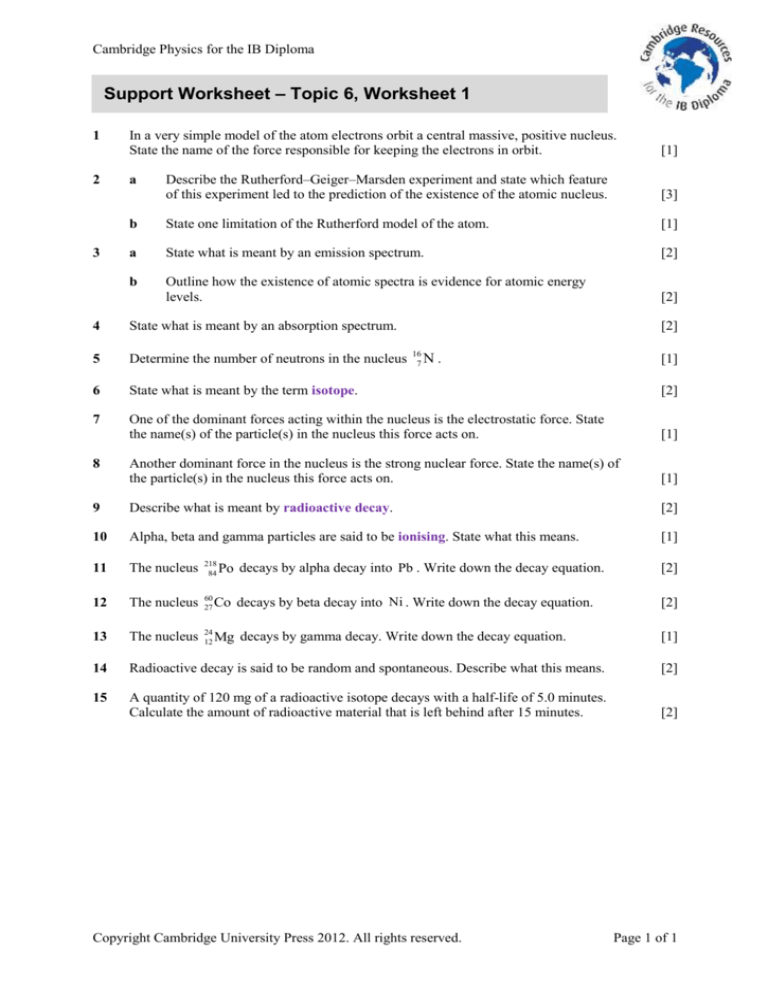
Cambridge Physics for the IB Diploma
Support Worksheet – Topic 6, Worksheet 1
1
2
3
In a very simple model of the atom electrons orbit a central massive, positive nucleus.
State the name of the force responsible for keeping the electrons in orbit.
a
[1]
Describe the Rutherford–Geiger–Marsden experiment and state which feature
of this experiment led to the prediction of the existence of the atomic nucleus.
[3]
b
State one limitation of the Rutherford model of the atom.
[1]
a
State what is meant by an emission spectrum.
[2]
b
Outline how the existence of atomic spectra is evidence for atomic energy
levels.
[2]
4
State what is meant by an absorption spectrum.
5
Determine the number of neutrons in the nucleus
6
State what is meant by the term isotope.
[2]
7
One of the dominant forces acting within the nucleus is the electrostatic force. State
the name(s) of the particle(s) in the nucleus this force acts on.
[1]
Another dominant force in the nucleus is the strong nuclear force. State the name(s) of
the particle(s) in the nucleus this force acts on.
[1]
9
Describe what is meant by radioactive decay.
[2]
10
Alpha, beta and gamma particles are said to be ionising. State what this means.
[1]
11
The nucleus
218
84
12
The nucleus
60
27
Co decays by beta decay into Ni . Write down the decay equation.
[2]
13
The nucleus
24
12
Mg decays by gamma decay. Write down the decay equation.
[1]
14
Radioactive decay is said to be random and spontaneous. Describe what this means.
[2]
15
A quantity of 120 mg of a radioactive isotope decays with a half-life of 5.0 minutes.
Calculate the amount of radioactive material that is left behind after 15 minutes.
[2]
8
[2]
16
7
N.
Po decays by alpha decay into Pb . Write down the decay equation.
Copyright Cambridge University Press 2012. All rights reserved.
[1]
[2]
Page 1 of 1




